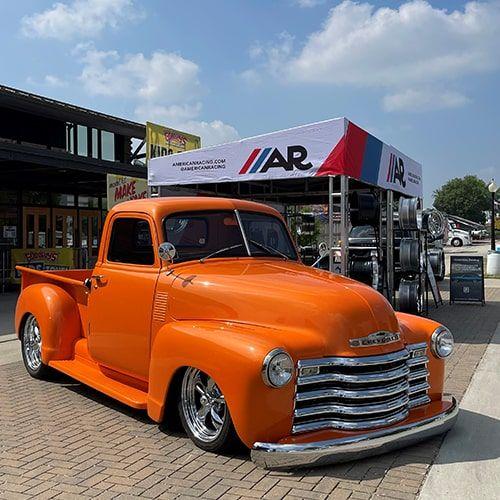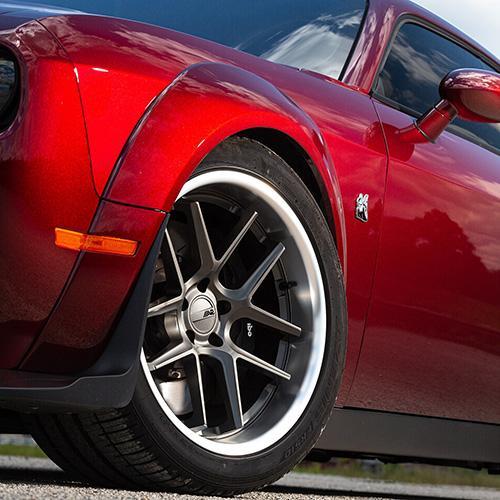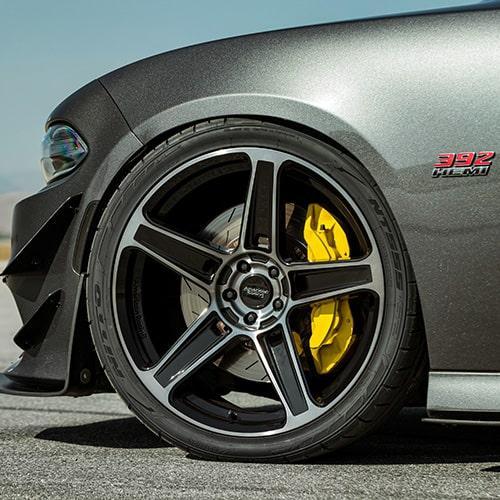In today’s marketplace, steel and aluminum are the most common wheel materials. Steel wheels are made in two pieces. The inner piece, which is called the center, bolts on to the car. The outer piece is known as a barrel and receives the tire. The two pieces are welded together to form the wheel. Many original equipment wheels on entry level trim packages are made this way. Steel is durable, inexpensive, and easy to repair. For these reasons, it has remained a popular material for wheel manufacturing. The other material, aluminum, is by far the most popular type of wheel we sell. Its lightweight, has superior heat dissipation, and seemingly endless design variations making it the material of choice for most buyers. Aluminum wheels can be manufactured in many ways, and each method offers advantages.
One-Piece Cast Wheels
Pouring molten aluminum into a mold creates a cast wheel. The metal then takes the mold’s shape as it cools and hardens. There are three types of casting methods: low pressure/gravity, counter pressure, and high counter pressure molding (HCM). Each method has its place in today’s market. A wheel manufacturer will select a particular method according to the weight, strength, and finish that they have specified for that design. Naturally, the more sophisticated and costly methods produce lighter and stronger wheels but at a higher price.
Flow Formed Wheels
A Flow Formed wheel starts out the same as a cast wheel, but with a notable exception in the barrel. The barrel is spun, heated, and then pressed between steel rollers that pull the rim to its final width and shape. This creates a lighter and stronger rim compared to regular cast wheels, but without the expense of a forged wheel.
Forged / Billet Wheels
The two words “forged” and “billet” have become synonymous. However, the manufacturing process is called forging, while the material used is a billet. Billet is the term used for a solid piece of dense aluminum. The forge, a huge machine that exerts thousands of pounds of pressure on the metal, basically presses or rolls the billet into its fundamental form. This forging is then machined to a final finish. This process allows wheels to be built with much less material. This results in lighter weight and unique designs because the process creates a much stronger wheel than other methods.
Multi-Piece Wheels
The processes mentioned above can be combined to produce a wheel of a particular strength and weight at a particular price. For example, some wheels have a cast aluminum center, welded to a rolled outer (extruded aluminum rolled into a hoop). Another type of two-piece construction features a billet center welded to a rolled outer (extruded aluminum rolled into a hoop). Other wheels feature a split outer so that widths and offsets can be made to custom specifications. This last method is the three-piece type of construction. In this type of wheel, the center can be cast, billet or forged, and is usually attached to the outer assembly by bolts, either exposed or hidden.












